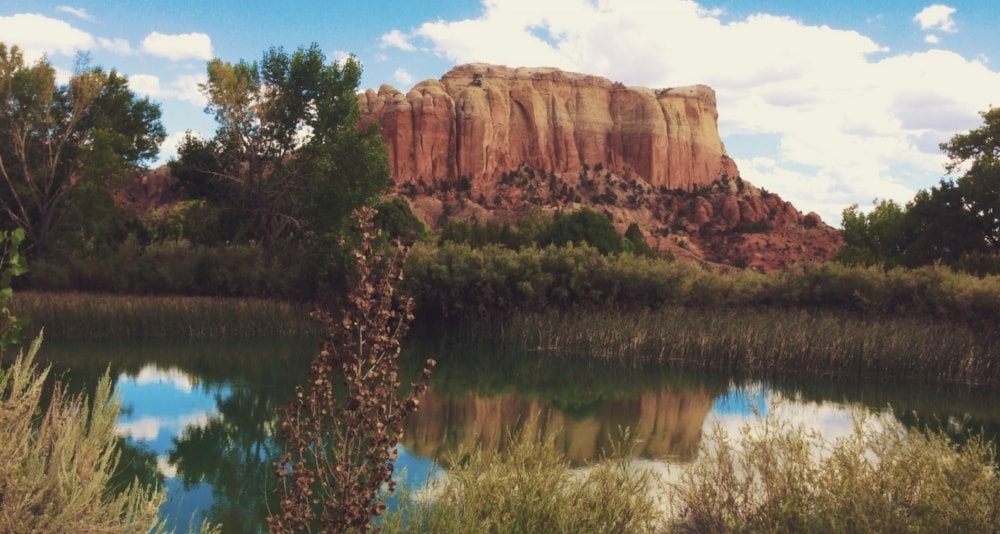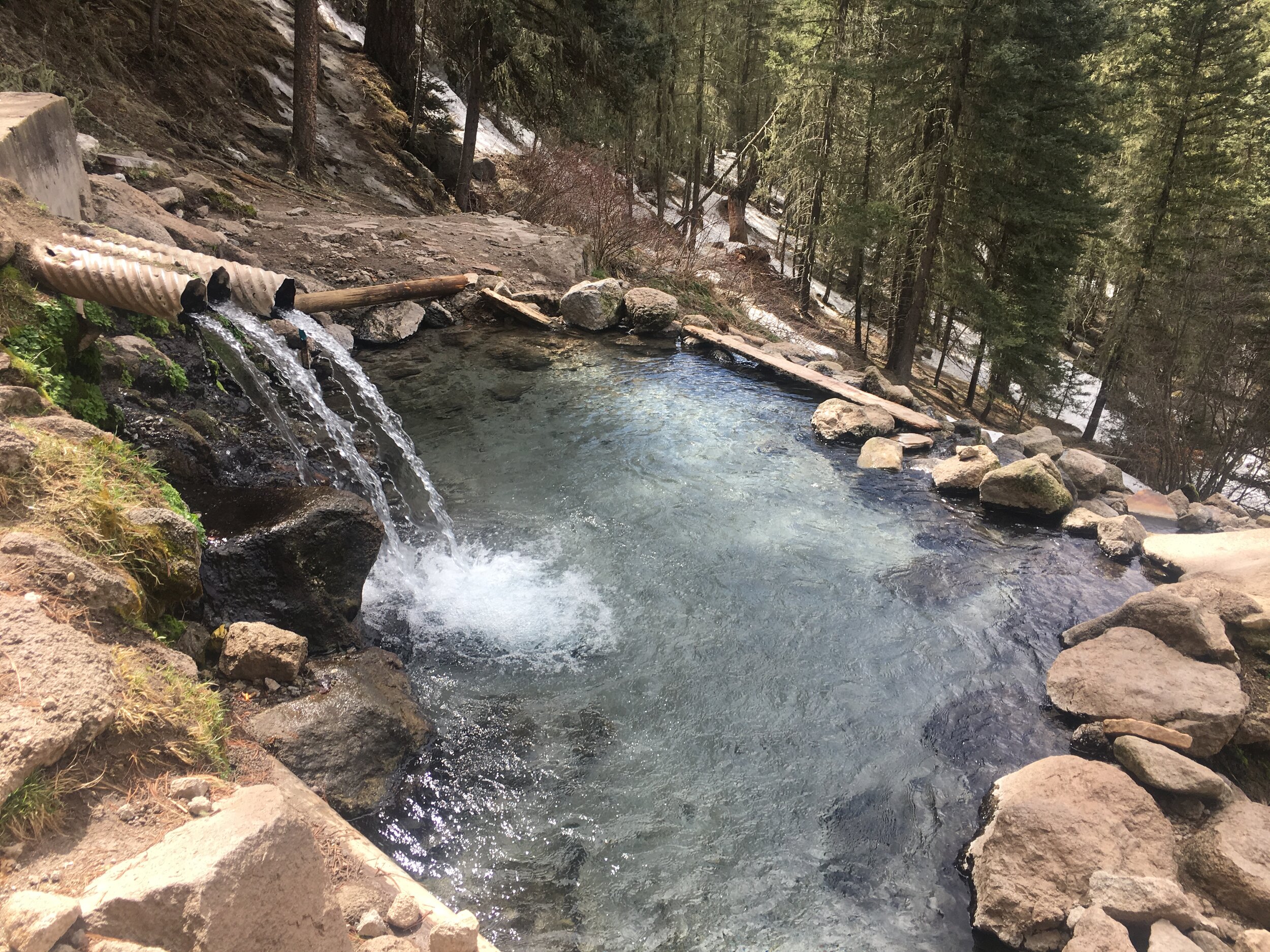Canyon Road and Santa Fe’s Eastside: A Self-Guided Walking Tour
We'll be honest. When we first moved to Santa Fe, we didn't love Canyon Road. Sure, it's one of Santa Fe's top destinations - but it didn't feel approachable. The price tags on the art made going into some of the galleries feel intimidating. Plus, as lovely as it is, Canyon Road can feel crowded and overwhelming, especially during the summer months. So although we lived just blocks away, we didn't spend much time on Canyon Road. Then we realized two things:
There's so much more to Canyon Road than fancy, empty-your-savings-account galleries; and
Once you step off of Canyon Road, you'll find yourself on some of the city's most magical streets
So, we've put together a half-day "ramble" - or self-guided walking tour - that hits some of our favorite spots in the neighborhood. This is an approximately two mile walk, and is beautiful any time of year.
Whether your interest lies in art, architecture, history, or food, you'll find plenty of diversions on Canyon Road and the historic backstreets of the Eastside neighborhood.
Canyon Road History - From Farms To Galleries
First, a bit of history. Today, Canyon Road is the heart of Santa Fe's thriving art market (in fact, the third largest by sales in the country, after New York City and Los Angeles). However, its status as the city's gallery row is relatively recent. In its earliest incarnation, there was a trail here used by local Pueblo people that followed the Santa Fe River up into the mountains, and then down into the now-abandoned Pecos Pueblo.
The first houses on the road were built by Spanish settlers shortly after the Spanish founding of the city in 1610, but the oldest surviving houses date from the 1750s. In the early days, this area was considered the outskirts of town. It was a quiet, rural, agricultural area. Inhabitants had small farm plots where they grew corn and other vegetables, and it was common to see sheep being driven down the road, returning from greener pastures in the canyon. The street was paved in 1964, and remained quiet and mainly residential until the late 1970s, when many of the homes were converted to galleries.
Canyon Road Half-Day Ramble
The city's main acequia runs through the historic Eastside neighborhood, next to Canyon Road
Zaplin Lampert Gallery - Admire some of New Mexico's finest art
Start your stroll at the bottom of Canyon Road (where it intersects with Paseo de Peralta). There is no shortage of galleries to visit - one of our favorites is Zaplin Lampert Gallery, which primarily features works from the early artists of the Santa Fe & Taos schools of painting. Housed in a historic adobe, a stop here feels like a visit to the best kind of museum - small, intimate, and friendly. Although the artwork on display is well above our price range, the staff has always been welcoming. This is the place to brush up on your New Mexico art history and see originals by great New Mexico artists like Gustave Baumann, Will Shuster, and Randall Davey.
The Teahouse - Refresh with exotic teas
If all the art buying (or just art admiring) has made you hungry, make a stop at The Teahouse, our go-to lunch spot on Canyon Road. Their outdoor, tree-shaded patio is one of the city's best outdoor dining options, and they feature yummy sandwiches, salads, specials and desserts. As the name would suggest, the focus here is the tea menu, which includes teas with names like "Freak of Nature," "Little Melon Seed," and "Duck Shit Oolong," as well as the Lapacho Orange Vanilla, whose menu listing includes an inexplicable warning against drinking it while pregnant.
Acequia Madre - Get ready for some serious house envy
After you've had your fill of exotic teas, continue walking east, to where Canyon Road intersects with Acequia Madre. Take a sharp right onto Acequia Madre (you will now be walking west). Although it parallels Canyon Road, Acequia Madre is a world apart - quiet, tree-lined, and unpaved. If you've ever fantasized about living in Santa Fe, this is probably what you've fantasized about. It's one of the most beautiful - and pricey - residential streets in the city, with graceful, rambling adobe homes. It's also wonderfully green and shady, due to the presence of its namesake, the acequia madre.
The word acequia roughly translates as irrigation ditch, which doesn't do justice to the lovely waterway running through the neighborhood. The acequia system - developed by Spanish settlers in the late 1600s - is a system of irrigation ditches that are carry water from a central source - in this case, the nearby Santa Fe River - to surrounding farms. The system is based on communal ownership structure, where each landowner is assigned a day on which they are allowed to divert water to their fields. The communal ownership structure also involves care and upkeep of the acequias. The acequia in this neighborhood is the city's primary (or "mother" / madre) acequia.
Arroyo Tenorio & Garcia St. - Take a coffee break & admire more historic homes
For a pick-me-up, make a stop at Downtown Subscription, a cozy neighborhood café. Find a spot on their patio to enjoy your beverage. From there, turn southwest onto Arroyo Tenorio to ogle more historic homes. This is a narrow dirt road that may make you feel like you've gone back in time a couple hundred years. When you reach Old Santa Fe Trail, turn around and retrace your steps on Arroyo Tenorio, then cross Acequia Madre and continue on Garcia St. - yes, another lovely street with beautiful homes (if you can't tell, we have a bit of house envy!).
Café des Artistes - Parisian vibes on Canyon Road
Café des Artistes - Reward yourself with wine
When you reach Canyon Road again, reward yourself for successfully completing your walk with a glass or wine (or two) at Café des Artistes, a tiny, charming French café with an outdoor patio and an adorable Parisian-style "micro-bar."
Bonus Extension:
If you're feeling especially ambitious and want to get some serious exercise (or have a car), you can extend this ramble to Upper Canyon Road. t's a 2.4 mile walk from the Teahouse to the end of Upper Canyon.
The upper part of the road is unpaved, and the homes up here are nestled between tree-covered hills. Once you reach the end of the road, you'll can visit the beautiful Randall Davey Audubon Center. Randall Davey was an early Santa Fe school artist who bought an old U.S. army sawmill built in 1847. You can tour his home and studios and wander the grounds and the Audubon's hiking trails. Or, head across the road to the Santa Fe Canyon Preserve for a 1.5 loop walk around a reservoir. The lush greenery and flowing water will make you forget you're in the desert.
The Details
Zaplin Lampert Gallery // 651 Canyon Road // 505-982-6100 // Website
The Teahouse // 821 Canyon Road // 505-992-0972 // Website
Downtown Subscription // 376 Garcia St // 505-983-3085 // No website
Café des Artistes // 223-B Canyon Road // 505-820-2535 // Website
Randall Davey Audubon Center // 1800 Upper Canyon Rd // 505-983-4609 // Website
Santa Fe Canyon Preserve // Trailhead at Cerro Gordo Rd & Upper Canyon Rd// Website
At Wander New Mexico, we have a passion for telling stories and creating unique gastronomic experiences that allow people to connect through food.
Join us for authentic, immersive food & history tours that allow our guests to experience New Mexico’s unique food culture, rich flavors, and intriguing history!














